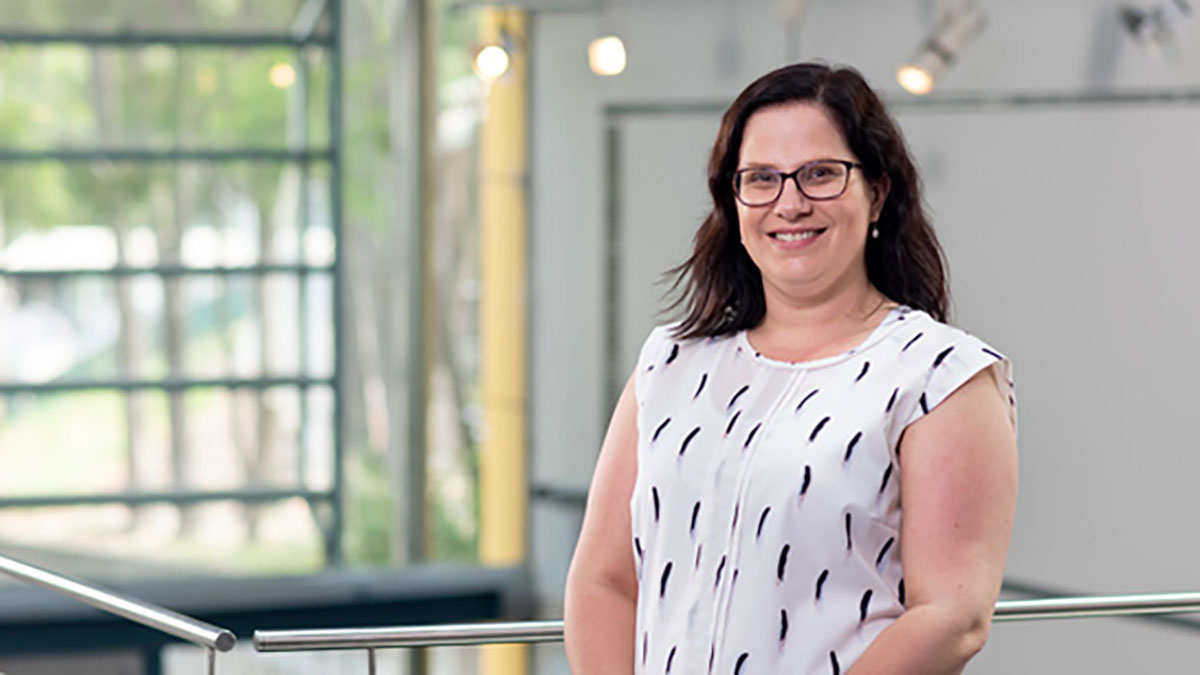Researcher Highlights
The science of sensation
Dr Melissa Tadros
Dr Melissa Tadros’ research is providing new insights into how nerve signals travel from the body to the brain and govern sensory discrimination.

Dr Melissa Tadros is curious about sensory pathways, specifically, what happens when they are disrupted. Crucial to navigating our environment—distinguishing warm from hot, or a tickle from an itch—disrupted sensory pathways can have devastating effects.
“My research seeks to understand how the signals from our environment are passed onto our brain, and how the brain tells our bodies what to do in response to this information.
“The ability to sense a cool summer breeze, an insect crawling on the skin, a full stomach or food that is too hot to eat depends on this carefully organised sensory pathway.
“When it is disrupted, the consequences can be serious. Imagine if the touch of your clothes caused inexplicable pain. Or if you were unable to determine whether a drink was too hot to consume.”
Under the microscope
Melissa uses highly advanced neurological techniques to examine sensory pathways in detail. This allows her to investigate the kinds of signals sent from the body to the brain via the spinal cord, and how damaged cells behave.
Melissa is particularly interested in what happens to these signals during early development or when they’re damaged by infection or stress. To explore this further, she has teamed up with Associate Professor Jay Horvat from the Respiratory Immunology Research Group, located at the Hunter Medical Research Institute (HMRI), and Professor Deborah Hodgson, the University’s Pro Vice-Chancellor (Research and Innovation) and Director of University of Newcastle’s Laboratory of Neuroimmunology. Their collaborative studies aim to better understand the long-term implications of neonatal infections.
“We often don’t think about the long-lasting effects of infections, but when these infections occur early in development, they can have significant impacts on our nerves that last well into adulthood.”
Taking research to the classroom
As an educator, Melissa can offer her students access to the latest research progress and innovation. She is also gifted at explaining complex scientific processes in a way that is palatable for allied health undergraduates—a powerful and valuable trait.
“Being at the forefront of neuroscience research means I have a wide knowledge base upon which to design my teaching resources. This helps me to design meaningful, and hopefully interesting, classes for my students.
“I like seeing students grasp concepts and build their foundations early in their chosen program. It’s critically important to have a foundational knowledge of the human body and all its complexities in order to be able to adequately treat patients in any profession.”
Developing new strategies and treatments
In 2018, Melissa participated in the University’s ThinkWell Early and Mid-Career Women’s Development Program, facilitated through the Faculty of Health and Medicine's Gender Equity Committee. Soon after, she was awarded the University’s covetable Women in Research Fellowship for 2019. The fellowship is helping to launch Melissa into the next phase of her career: expanding her research team and continuing to connect and learn from eminent female professors.
“Understanding neuronal networks is fundamental to working out how the brain communicates with the body, and vice versa. If we don’t know how things work in a “normal” individual, it is impossible to accurately develop strategies and treatments for disease intervention and prevention.
“I aim to spend the next few years of my career building and developing a team of engaged and dedicated scientists who can contribute to answering these overarching questions.”
The University of Newcastle acknowledges the traditional custodians of the lands within our footprint areas: Awabakal, Darkinjung, Biripai, Worimi, Wonnarua, and Eora Nations. We also pay respect to the wisdom of our Elders past and present.
